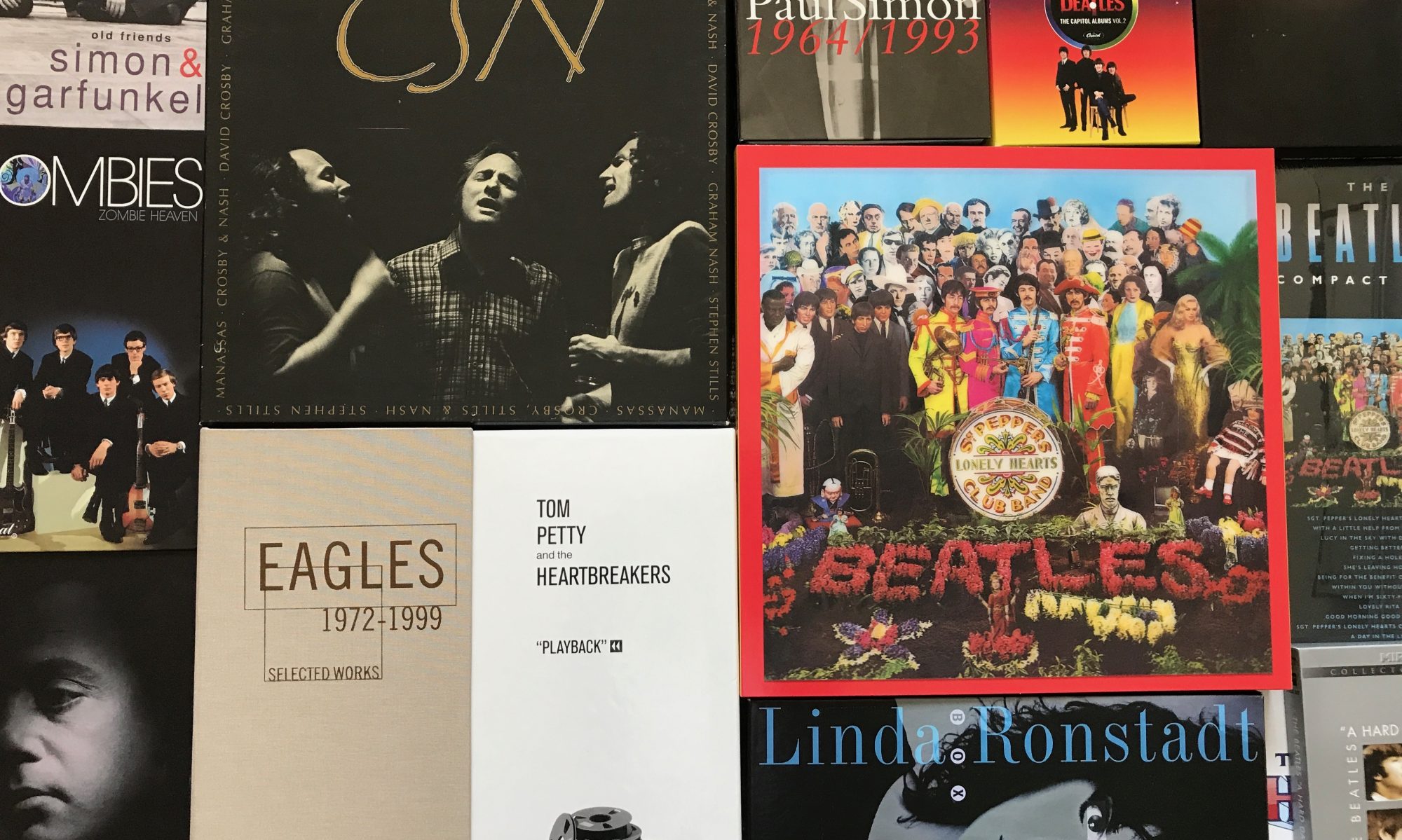It was 1986 when Compact Discs first outsold vinyl record albums. Now, 34-years later, the sale of vinyl albums has passed the money spent on CD’s.
 (Our son, Paul, has collected some classic albums recently.)
(Our son, Paul, has collected some classic albums recently.)
The Record Industry Association of America reports that during the first half of 2020, vinyl record sales were about $232-million, and sales of CD’s totaled about $130-million. (Update: Vinyl sales in 2021 make up about two-thirds of physical sales, with one-third being CD’s, but physical sales only make up 10% of the money spent. Most of the money for music goes to streaming services.)
The vinyl album was developed in 1948, and soon became the standard of the industry. Thirty-eight years later, 1986, CD’s passed vinyl in sales, and held that position for thirty-four years, until 2020. Update: (Feb. 2022) CD sales actually went up slightly in 2021, for the first time in many years.
Of course, the new figures just represent physical sales. Digital downloads of music has been declining fast. As of 2021, they make up just 5% of music sales. The real power of music sales is now subscription streaming, such as Apple Music, Spotify, and Amazon Music. Streaming accounts for 85% of all money spent on recorded music.
In the 70’s & 80’s, I listened to music & recorded with this stereo console I built in 1973 with my friend Dan Hryhorcoff.
Today, we just ask for a song or a playlist.
Even though overall physical sales are declining, Vinyl fans are enjoying the resurgence of their beloved records. So what are they buying? The biggest sellers are The Beatles, followed by other classic artists like Fleetwood Mac and Pink Floyd. Every once in a while, a current artist like Billie Eilish or Taylor Swift will make a splash on vinyl. Interestingly, Taylor Swift sold her album, Folklore, on Vinyl, CD, and Cassette. Then in 2021, Swift sold over 100,000 vinyl copies of Evermore in one week, which is the most in the last 30 years.
 (Listening to Crosby & Nash in 1972.)
(Listening to Crosby & Nash in 1972.)
So, physically owning a music collection is mostly a thing of the past, but at least a segment of music lovers are still “dropping the needle” on records of their favorite artists.












































































































